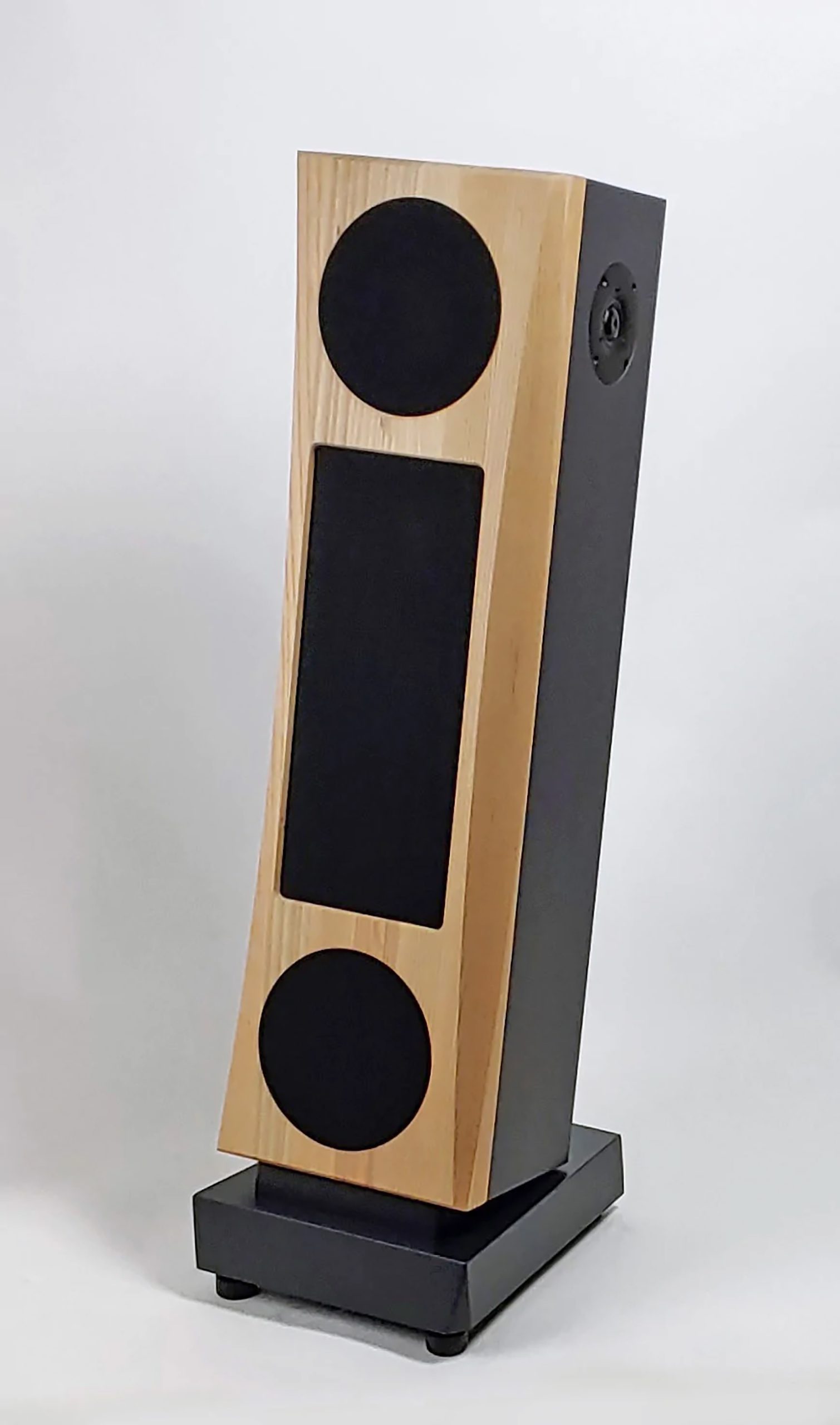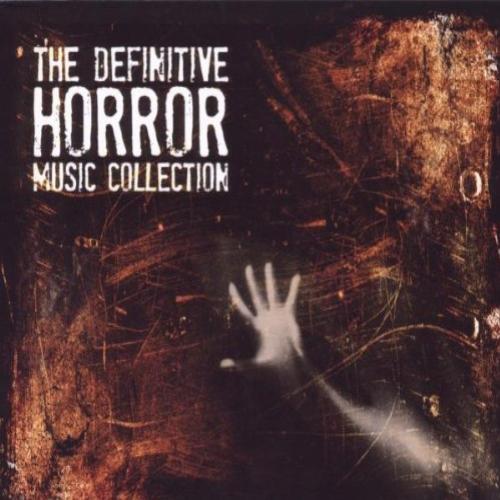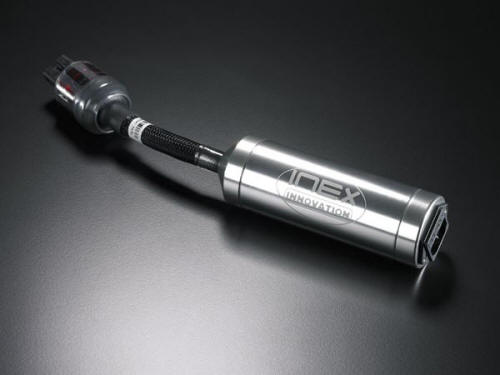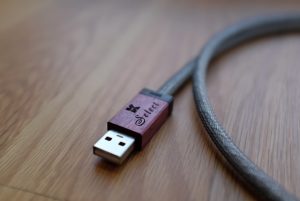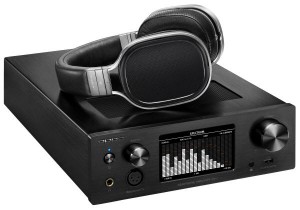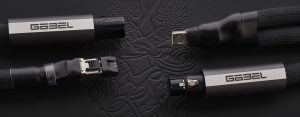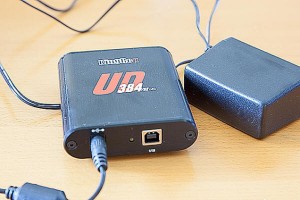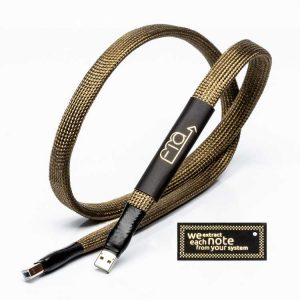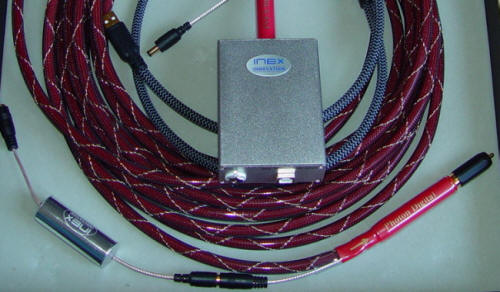
INEX Innovation, Inc. is a small audio company that was founded in 2004 by a group of audiophiles with strong engineering backgrounds in fiber optics and telecommunications. Over the last decade they have developed a digital amplifier that has been well received as have been their pre amplifier and CD Player.(1) Fiber optics has a number of advantages over copper in transmitting signals. Fiber optic cables can have runs of thousands of miles without any significant loss of signal (assuming repeaters are used). In addition, fiber optic cables are not sensitive to either EMI or RFI. And if done properly, the conversion from copper wire to fiber optic cable can leave behind much of the noise that was being carried on the copper wire signal.
Two years ago at the Newport Beach Audio Show I was asked to be one of five beta testers for a new cable from Harmonic Technology which incorporated INEX fiber optic technology. This cable, which I will call Photon 1, was the predecessor of the Photon USB2 to S/PDIF cable that is covered by this review. Physically, the Photon 1 and Photon USB2 look identical. As you can see in the photos of the Photon USB2, the supplied USB cable looks like a standard 1 meter USB cable. One end of that cable plugs into your computer/music server and the other into the small metal box. The small metal box comes with a small wall wart to provide power. Exiting the small metal box is a captive cable that is terminated in a male RCA plug. This cable is a standard INEX Photon Digital Laser Cable (an interconnect which utilizes fiber optic cable). The male RCA plug is plugged into the S/PDIF coax input of a DAC. The Photon USB2 comes in three standard lengths: 1.5 meters, 5 meters, and 10 meters. Both the Photon 1 I was using for comparison and the Photon USB2 that I was reviewing had cables that were 5 meters in length. If you order a Photon USB2 that is five meters in length or longer additional power is required. This additional power comes from another small wall wart that plugs into the digital cable at the male RCA plug end. Also with that additional wall wart comes a little metal cylinder that acts as a power line conditioner. This cylinder is plugged in between the wall wart and the power plug at the RCA end of the fiber optic cable.
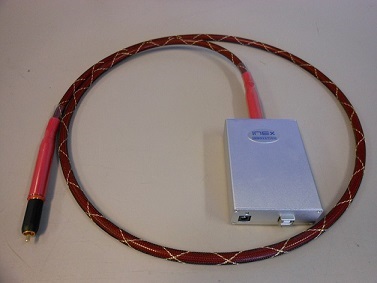
A few days after the Newport Beach audio show I installed the Photon 1 into my audio system. Installation required me to install, via a supplied CD-R, the PC software drivers that are needed to allow the Photon 1 to communicate with the laptop that I was using then as my music server. The software installation was very simple and uncomplicated. I then proceeded to plug everything together. First I attached the one meter USB cable between the laptop and small metal box. Then the RCA male coax plug was inserted into the DAC and the two wall warts were plugged into a power line conditioner and then plugged into the small metal box and the RCA plug end of the S/PDIF cable. After flipping the power toggle switch on the small metal to the ‘on' position I was then done with the physical part of the installation. Next I had to go into the control panel/sound of my Windows 7 laptop to select the small metal box as my speakers. The final step was to enter the Tools\options section of the JRiver software that I use as my music player to set the music source as the small metal box and select WASAPI as the protocol. The installation instructions walks you through this simple process with pictures and text. If you are using a MAC computer your install process is a little different and a whole lot simpler.
With everything plugged in, I made certain that everything was working properly. Then I started listening to a track of music that I play in the demo rooms at the various audio shows that I attend. I am very familiar with this music and have heard it played in many different rooms and systems. Within the first few seconds of playing the first track I noticed that the noise floor had dropped substantially. I was hearing more subtle detail that had previously been buried in the noise floor and that the music was coming from a deeper sound stage and from a much blacker background. The improvement to my ears was on the order of going from a US$1,500 pre amp to a US$7,000 pre amp. It was that big of a change. I spent the next few hours playing track after track of my audio show test music. Across all genres of music the level of improvement was the same. The next day I called some audiophile friends and arranged for them to come over and listen to what the Photon 1 was doing to the sound of my system. When they came by I swapped the Photon 1 in and out of the system. They all heard what I had heard. One of the audiophiles who came over was a Hi End audio distributor and dealer. He asked if he could borrow the Photon 1 to try in his own system and took the Photon1 home with him. The next day he called me and said it did exactly the same thing in his system as it did in mine. He very reluctantly returned the Photon 1. I spent the next few weeks playing album after album using the Photon 1 and enjoying myself immensely. Then I received a call from my dealer friend. He had spoken with Jim Wang of Harmonic Technology, who provided the Photon 1 prototype to me. Jim had given permission to my friend to take the Photon 1 to an upcoming audio show where my friend was going to be exhibiting. My friend took the Photon 1 to the audio show and came back ecstatic. He had won "Best Sound of Show" and attributed much of the good sound in his room to the Photon 1. Since that time, the Photon 1 has never left my system except during this review of the Photon 2.
After my friend returned from the audio show we started thinking about what the Photon 1 was doing that was improving the sound so much. It was obvious that the Photon 1 was removing noise from the signal coming from the computer, but how. The USB cable coming out of the computer carries two signals: one is the music signal and the other is the power signal. Both signals contain noise, usually a lot of it. With a continuity tester we discovered that the supplied USB cable did not carry the USB power signal from the computer to the small metal box. This is why the small metal box has its own power supply (wall wart). The only signal that was arriving at the small metal box was the music signal. One source of noise had been eliminated. Inside the small metal box the USB signal was being converted to optical S/PDIF (TOSLINK) and the signal was sent out via fiber optics. If properly implemented, sending the signal out via fiber optics rather than copper should eliminate the noise that was carried on the USB music signal. This is because the process by which electrons flowing in a copper wire are converted to photons flowing in a fiber optic cable only allows the data portion of the signal to the pass through to the fiber optic cable. Only the data bits, the information being carried by the copper wire, are converted to photons. The noise, which is a much smaller out of band signal, does not get converted to photons. Thus, none or very little of the noise mixed with the USB music signal gets passed on. The Photon1, therefore, was very effective at removing both the noise in the power signal and in the music signal that was contained in the signals generated by the computer/music server. This is why the music sounded like it was coming from a darker background and that there was more detail than before. That is what reducing the noise floor sounds like.
When the Photon 1 was released to the public its price was over US$2000. My dealer friend and I started doing some experiments to see if we could duplicate the noise reduction of the Photon 1 at a cheaper price. Using off the shelf commercial components we built a number of systems that utilized various technologies. All of the systems worked to a greater or lesser extent. We learned a lot about the transmission of audio signals. However, none of our home brew systems came close to achieving the noise reduction of the Photon1. The one that came the closest was the simplest. The USB signal was converted to ethernet and then converted from ethernet back to USB. The cost was about US$100 for the two converters and US$25 for 150 feet of CAT5e cable. Ethernet cable is transformer coupled with the devices it is connecting. This means the ethernet cable acts as an isolation transformer and that is why it worked so well in our tests. I also got to prove to myself that yes, an ethernet cable can carry a signal for 150 foot without the need for a repeater.
That was the in the past. Now we fast forward to the present. After additional experimentation and consumer feedback INEX has released the new, improved Photon USB2 USB to S/PDIF converter. Since receiving the Photon 2 I have done many, many comparisons between the Photon 1 and the Photon USB2 using many different genres of music. I had some of my audiophile friends come over to hear the comparisons. Everybody was in agreement; the Photon USB2 does sound slightly better than the Photon 1. Music played through the Photon USB2 was arising from a blacker background which yielded more subtle details and a wider, deeper sound stage than that produced by the Photon 1. Thus, the Photon USB2 must be removing even more noise than the Photon 1. In addition to the Photon USB2 providing a sonic improvement over the Photon 1, it has another very nice feature. The Photon USB2 is significantly less expensive than the Photon 1. Not too many products these days offer more for less.
Conclusion
We all know the benefit of power line conditioners. Most of us use them in our audio systems to clean up noise that comes in via the utility power lines. The Photon USB2 is in fact a power line conditioner for the music signal that comes out of your music server/computer, etc. It works extremely well at getting the noise out so that you can hear more of the music that is on the track. If you have the chance, you really need to hear the Photon 2 in your own music system. Highly Recommended. Roger Gordon
(1) Besides building electronics (amp, pre amp, CD player), INEX also designed the fiber optic cables that were sold by the audiophile cable manufacturer Harmonic Technology over the last few years. Jim Wang, the driving force behind Harmonic Technology, retired in 2013. Since then, INEX has been releasing under their own name, the same fiber optic cables that they had designed for Harmonic Technology. Some of these cables have been redesigned and upgraded so that INEX's current versions should be an improvement over the older Harmonic Technology versions. Mitch Ko of INEX Innovation, Inc. has told me that INEX will also provide support for owners of fiber optic cables which they purchased from Harmonic Technology.
Prices
Photon USB2 USB to S/PDIF Cable: US$1,200 for 1.5 meter cable, US$1,600 for 5 meter cable, and US$2,000 for 10 meter cable (Note: fiber optic cable is much cheaper than copper wire, that is why the prices above are not quoted in quarter meter increments)
Technical Specifications
Input USB USB 2.0, Type B connector
Output SPDIF (RCA) INEX Photon Digital Laser Cable, 1.5 m, RCA
USB Audio Class 2.0 Compliant Asynchronous Synchronization Mode, High Speed Bit Perfect Audio Data Stream up to 192 kHz
Driver Support WDM/Direct X and ASIO 2.1, MIDI, Adjustable Buffer Depth, Thesycon
Dimension and Weight 100 x 70 x 3 mm (3.9 x 2.8 x 1.2 inches) 0.34 kg (0.75 lbs)
Output Line Voltage 0.2 to 1.0 Vp‑p
Output Impedance 75 ohm
Frequency Response 2 Hz to 50 MHz
INEX Innovation
428 McCormick Street
San Leandro, CA 94577‑1005
(510) 567‑8503
[email protected]
www.inexinnovation.com
My audio system for this review:
Digital:
Music Server - Intel NUC, i5 processor, 16 GB RAM, JRiver software
NAS - Synology 212se connected to NUC by CAT6 ethernet cable
DAC - Lynx Studio Hilo ADC/DAC with analog volume control
USB to S/PDIF - INEX Photon 1 and Photon USB2
Analog:
Pre Amp - Herron Audio VTSP-3A
Amps - Herron Audio M1A mono blocks
Speakers - Janszen zA2.1




